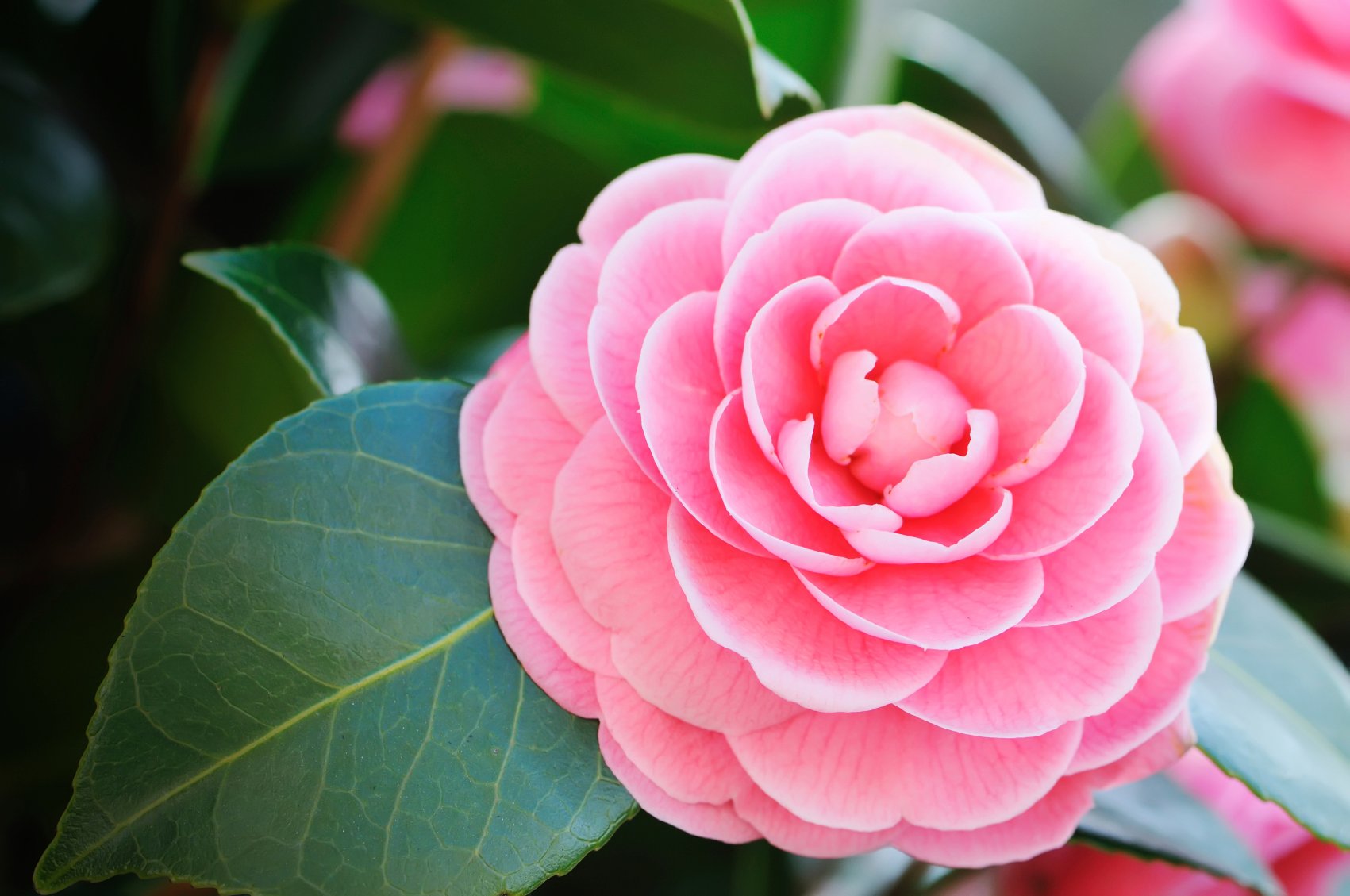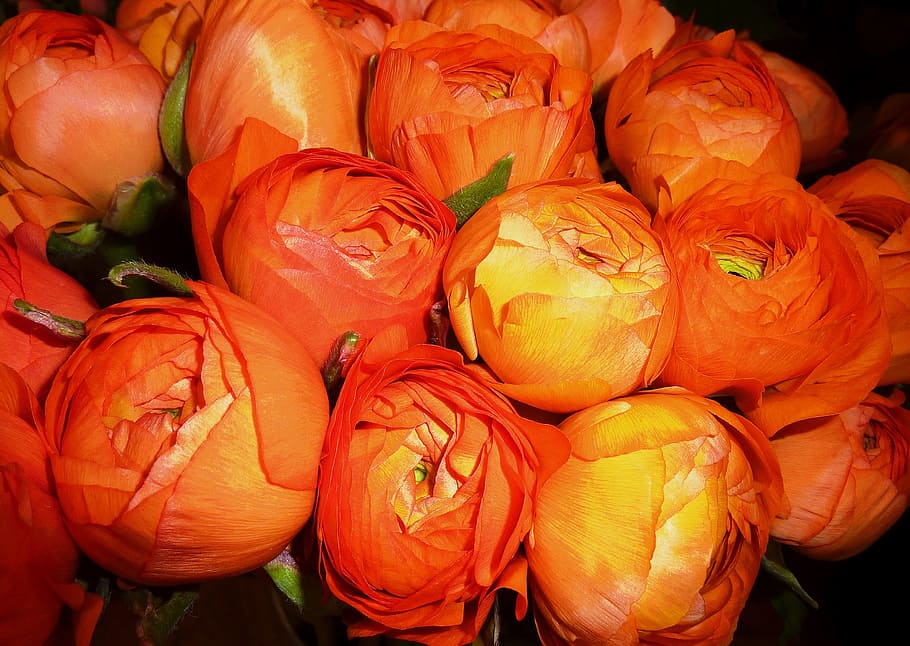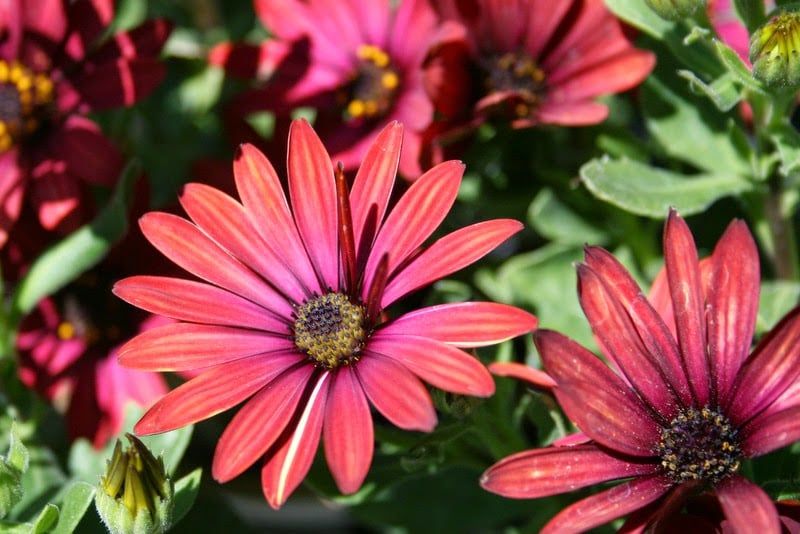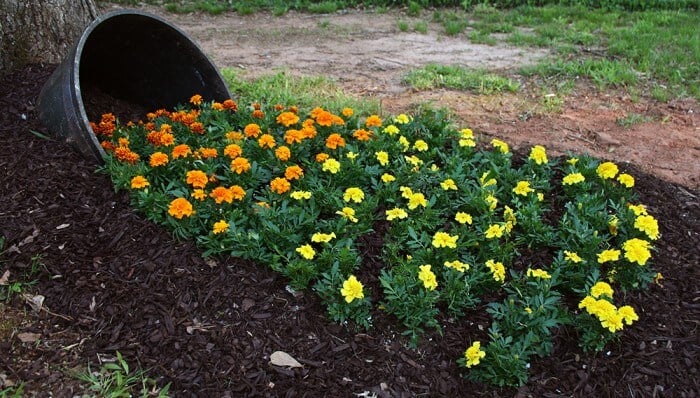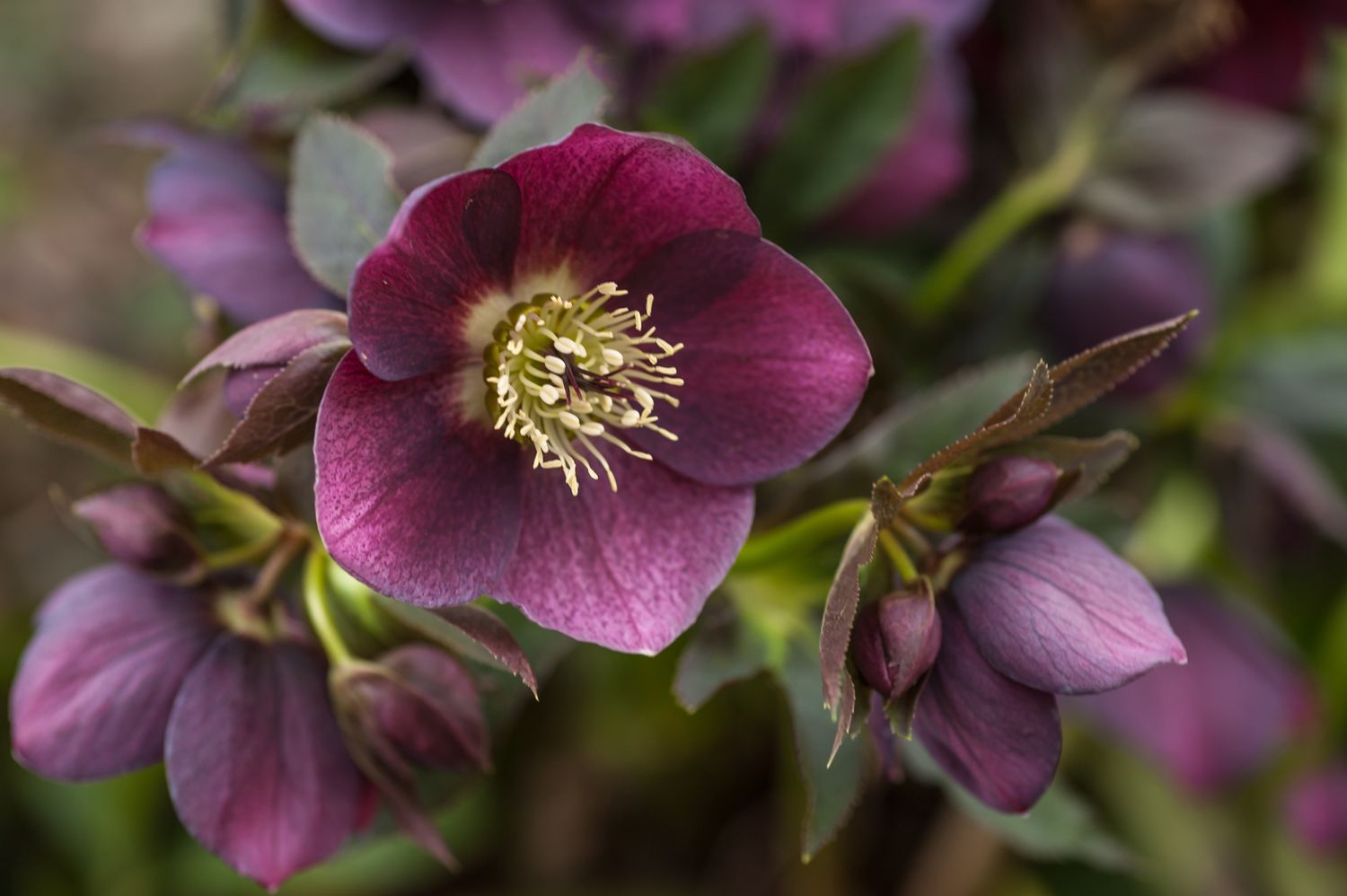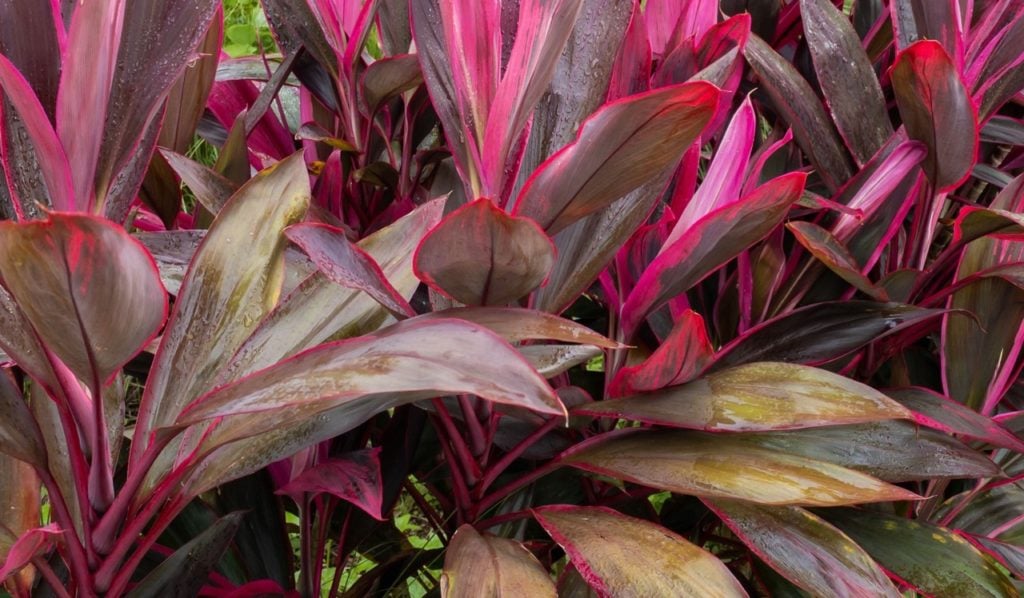The Ultimate 6 Step Guide for Growing Astrantia from Seeds
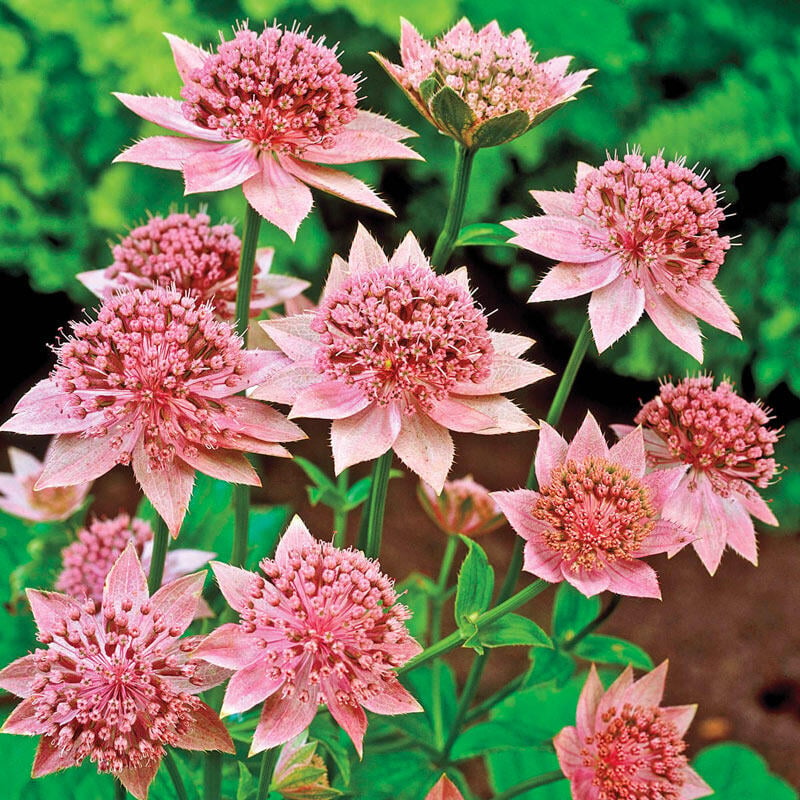
Table of Contents
Astrantia, they have other names like “Hattie’s Pincushion” and “Masterwort.” They are from the plant genus Apiaceae which are native to Central, Eastern, and Southern parts of Europe. Almost 100 types of species are in this genus Apiaceae.
Astrantia is a perennial plant that blooms during the spring season. They have subtle, muted colours and have different varieties of colours like greenish-white, pink, or maroon. The Astrantia have another name Hattie’s Pincushion,because the flower has a long, strong stem, long petals, and pincushion-like buds in the centre. They almost grow up to 3 feet tall. These flowers will die during the autumn season and grow again during the spring season.
The flower grows best in fertile soil that drains quickly and will do good in sun or light shade. As these flowers are summer flowers, during hot weather conditions, the flowers may become crisp, so water them well.
Synopsis of Astrantia
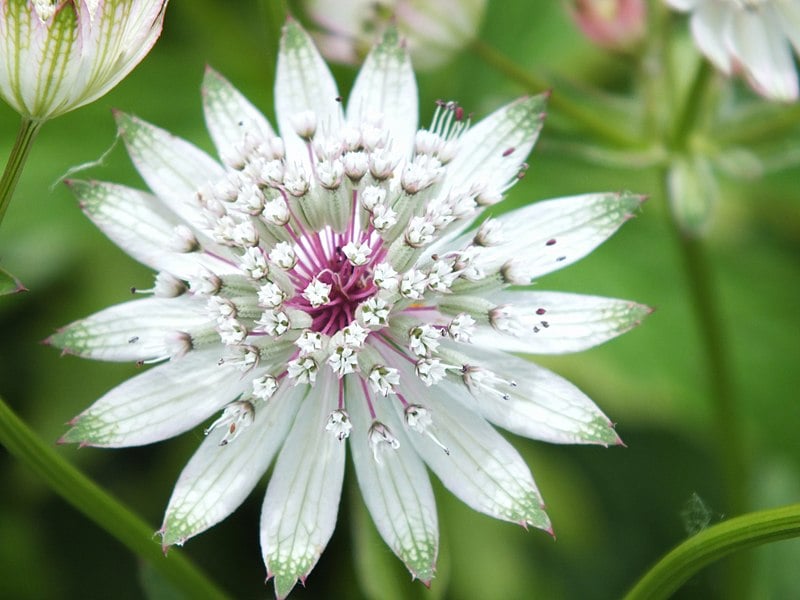
Astrantias need to be watered frequently during summer or drought; otherwise, they will die. To keep them healthy, you have to fertilize them once or thrice a year. To keep the Astrantias flowering, you need to deadhead the flower.
Leaving the flowerheads in the flower to form seeds will delay the flowering of new blooms. Suppose the flower in the stem fades snip off the base of the flower. The Astrantia flower will have tremendous and healthy growth in soil that is rich in organic matter.
The soil for the growing Astrantia should be slightly acidic in pH and rich loamy soil, which will retain moisture. These flowers can withstand about -23 degrees Celsius. They are sown during April and May, and they need cold conditions to germinate the astrantia seeds. They have a hardiness of 4 to 9.
6 Steps to Sow Astrantia Seeds
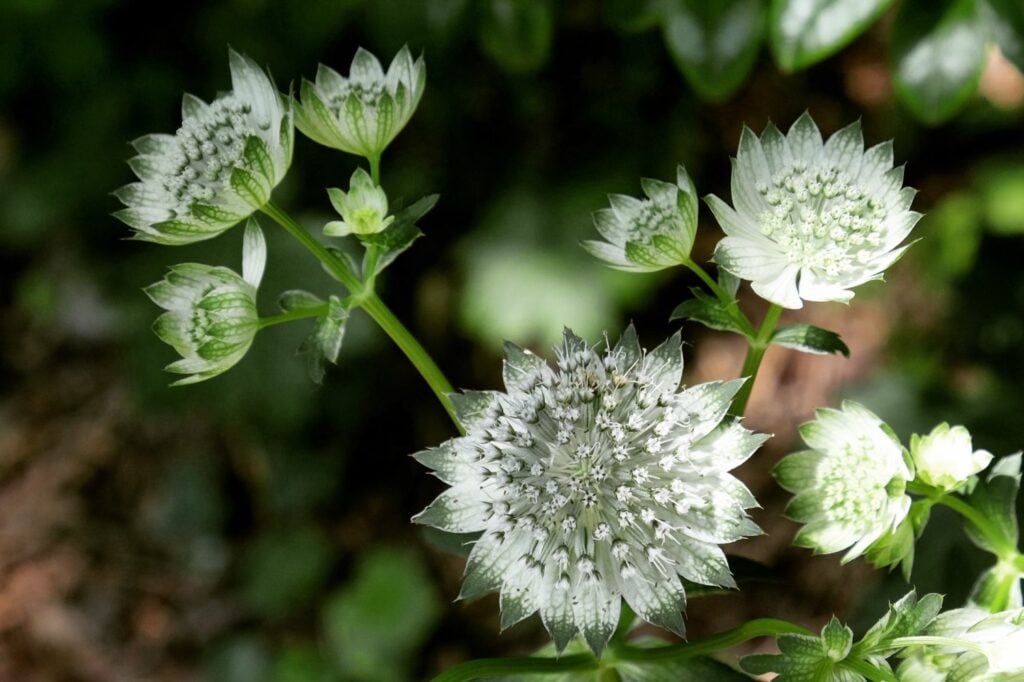
1. Collect the Seeds
The Astrantia seeds will be deadhead for rapid flowering of the plant. If you want astrantia seeds from the flower, let them be and collect those from the flowers, or you can also purchase the seeds. Moreover, the seeds are easy to collect. After collecting the astrantia seeds, if the head of the seed turns brown or dry before they are about to open. Pu them in a bag and shake them well. This will make the seed pop out into the bad. Collect these astrantia seeds that are ready to be sown.
2. Prepare Seed Trays
When the seeds are ready for sowing, choose a suitable tray or a pot for sowing them. Fill the potting mix into the tray or the pot where the astrantia seed will be sown. Ensure that the potting mix will retain moisture well, which is important for the astrantia seeds to germinate. Mix well the soil with fertile organic matter as it is important for the astrantia growth. Make sure the soil retains moisture, but it is aerated and is free draining. If the soil is of acid in pH and loamy soil would be great for the astrantia seeds.
3. Sow the Astrantia Seeds
When the tray or the pot to sow the astrantia seeds is ready, do not delay sowing the seeds. There are a few constraints to be followed while sowing the astrantia seeds. While sowing the astrantia seeds into the soil, place them nearly over the surface of the soil. They need light and sun to germinate if buried in the soil; they will not germinate well. Slightly press the astrantia seeds into the growing medium of the potting mix, and do not completely cover it.
4. Cover with A Thin Layer
Cover the sown astrantia seeds with a thin protective layer, and do not overcover them as it needs light. If the astrantia seeds are sowed in the tray, keep the tray under the water. So, the soil will retain moisture which will keep the soil always moist. To water them daily during this stage, keeping them underwater will let the soil and water engage.
This will create the best condition for germination. Sow the astrantia seeds in a tray around October and leave covered light during winter to germinate. If they are sowed during summer, refrigerate the astrantia seeds 4 weeks before sowing; cold conditions will encourage germination.
5. Let Them Germinate
The astrantia seeds will usually germinate fairly and quickly. Not all the seeds in the tray or pot will germinate, but you can notice some of them germinate in a short period if the astrantia seeds sown during the autumn will not germinate as quickly.
You have to place them in colder conditions to show some results. If the astrantia seeds are sown during the winter or early spring will germinate quickly. The cold conditions during this season will contribute to seed germination.
6. Prick out Seedlings
If astrantia seeds are sowed during the autumn, prick the seedling and place them in the pot. Plant the seedling in a container or plant them directly in the original place in the garden. Once you notice the astrantia seeds shows germination result, do not hesitate to prick and pot them.
Place the young astrantia plant from October to April. Place them in the full sun as required for their growth. But few varieties need partial shade for growth. While planting them either pot or in the garden, the ideal location will be the loamy soil rich in humus and high organic matter that retains moisture.
Required Conditions to Grow & Care Astrantia
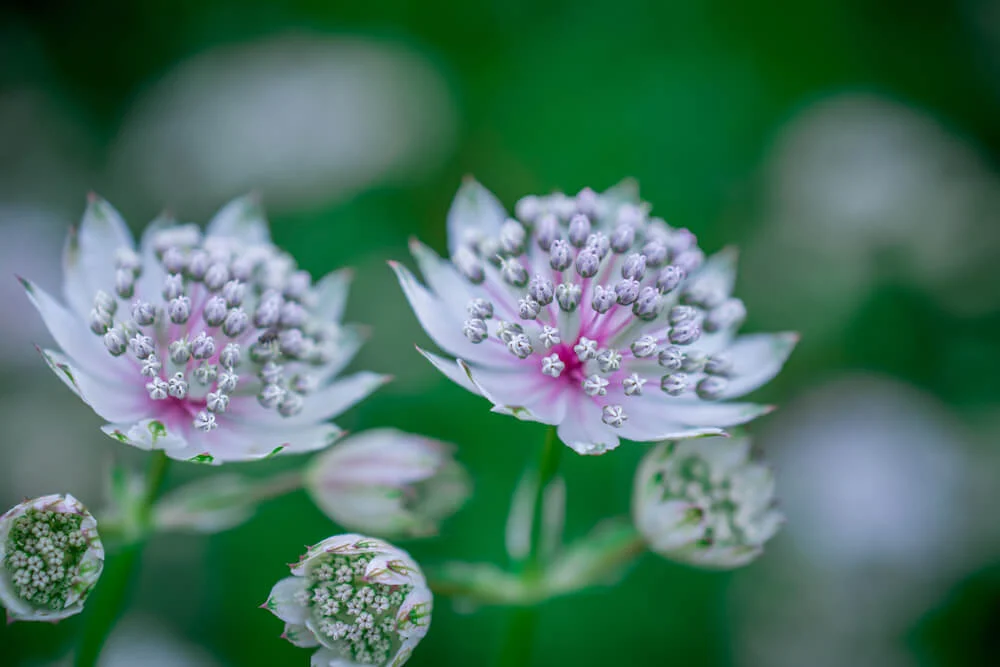
1. Location: Astrantia is a wild plant that is usually grown in cottage gardens. The plant should be placed in a shaded spot, and they are certainly garden flowers. These flowers need partial sunlight and complete exposure to the sun during hot hours, which is essential for their growth.
2. Soil: The flower needs soil that can retain moisture and is rich in organic matter. They will not grow well in too dry or wet soil. Dig a hole for ½ to 1 inch for sowing the astrantia seeds. First, fill the hole with loose soil, and do not pack the soil tightly. Do not forget to water well after planting.
3. Water: As these flowers bloom during the summer month, they need adequate water. They need water for the soil to retain moisture and always keep the soil moist. Water the plant regularly and frequently and specifically during summer.
4. Mulch: Add 3 to 4 inches of leaves as mulch on the surface of the soil to avoid drying out during the summer and freezing during the winter. These layering mulch will also help in retaining moisture from the soil and reduce weeds.
5. Deadheading: The deadheading Astrantia is the most important tip in taking care of this plant, as this will speed up the flowering of the plant. If you want seeds for sowing or multiply them, wait to deadhead the flower and leave them till the end of the season.
6. Fertilizer: Watering the flower during the summer and feeding them during this month is very important. Feed them with liquid fertilizer for good and healthy growth. Mulch the plant with leaves or compost during the fall.
Astrantia Flowers for Your Garden
1. Astrantia Star of fire
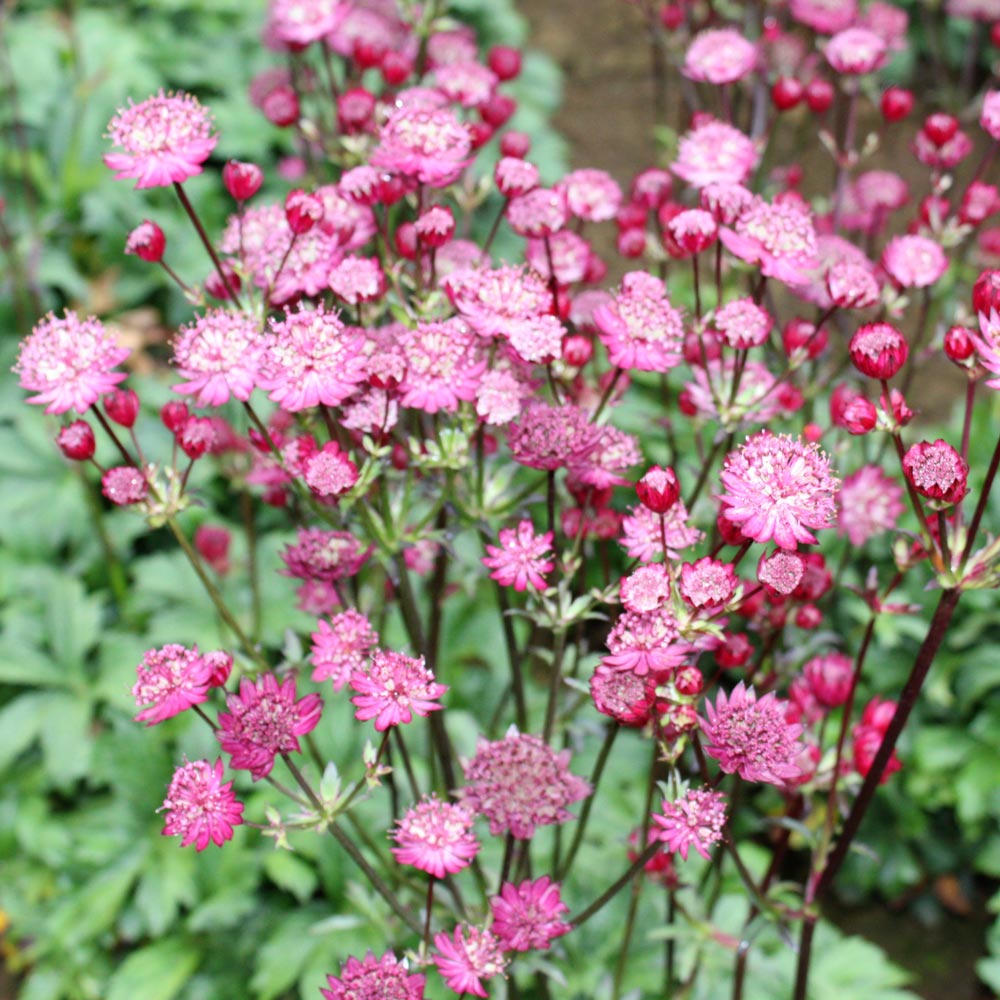
Height – 50 cm, size – 30cm, green leaves with pink and black edges.
2. Astrantia Bloody Mary
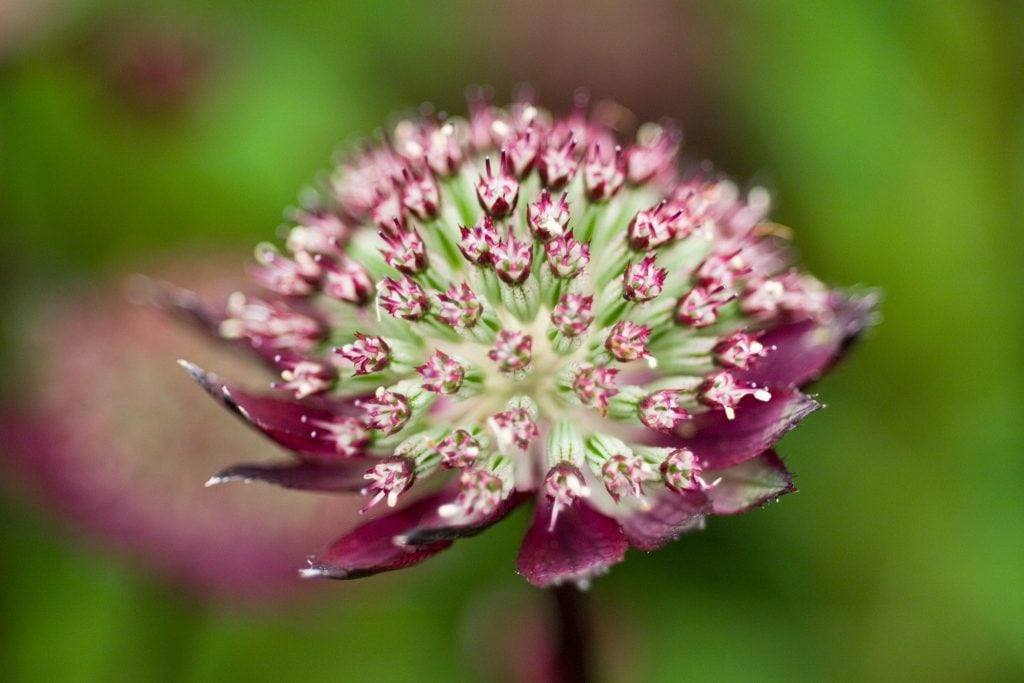
Height – 50cm, size – 30cm, green leave with dark red flower and slivery centre
3. Astrantia Claret
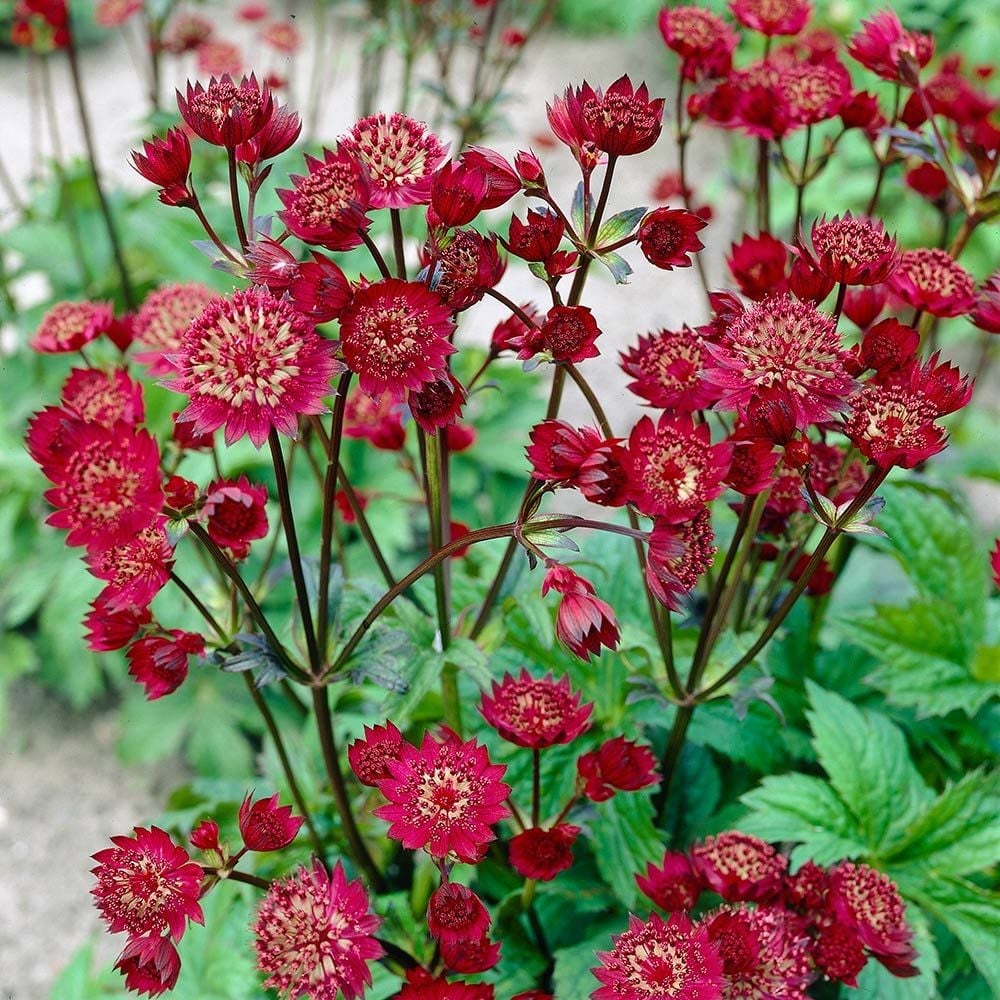
Height-60cm, size-45cm, deep red pincushion
4. Astrantia Major Alba
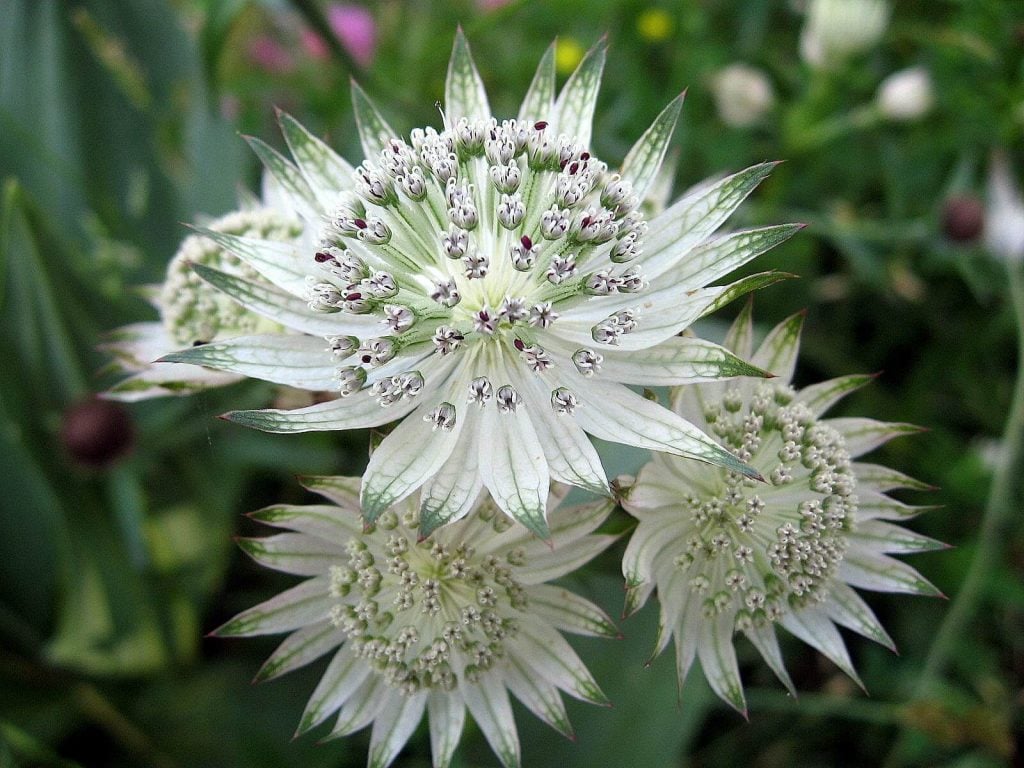
Height – 75cm, size – 50cm, white florets with white pincushion flower
5. Astrantia Major Burgundy Manor
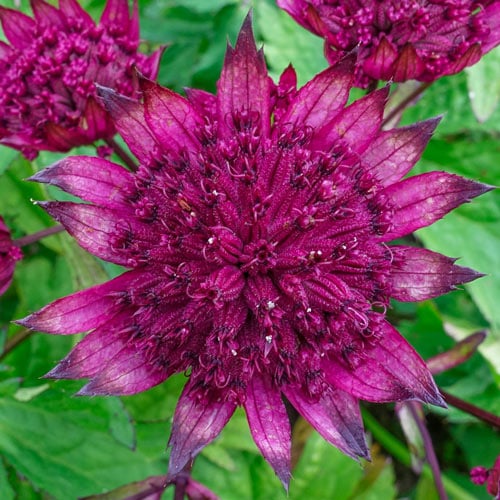
height-75cm, size-50cm, ruby-red pincushion
6. Astrantia Major var.Rosea
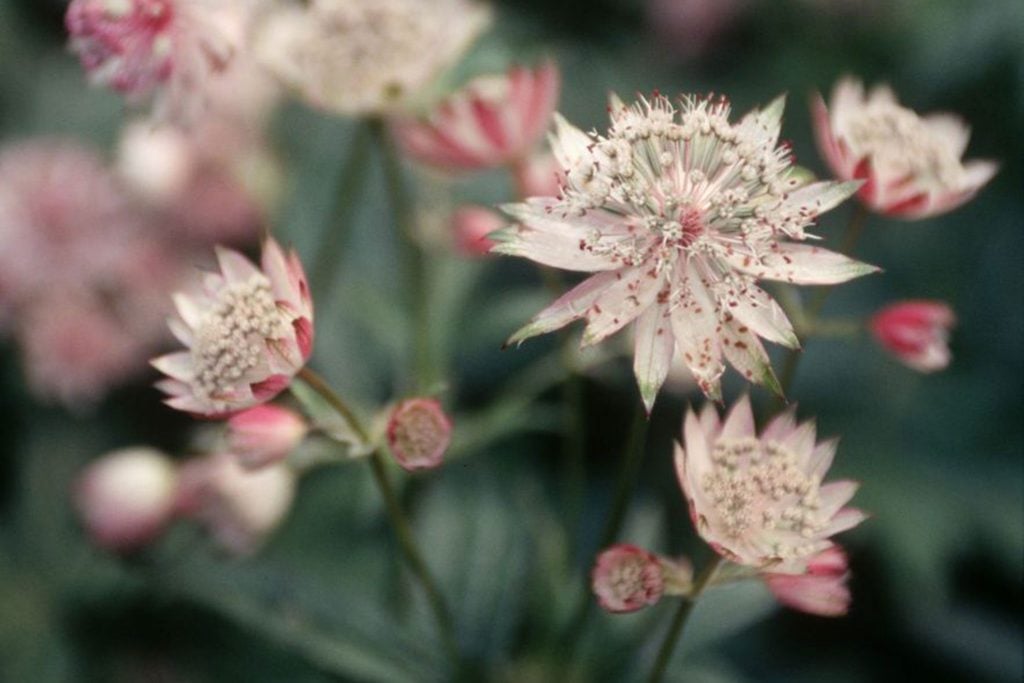
Height – 45cm, size – 45 cm, white, pink blooms with dark foliage
7. Astrantia Madeleine-van-Bennekom
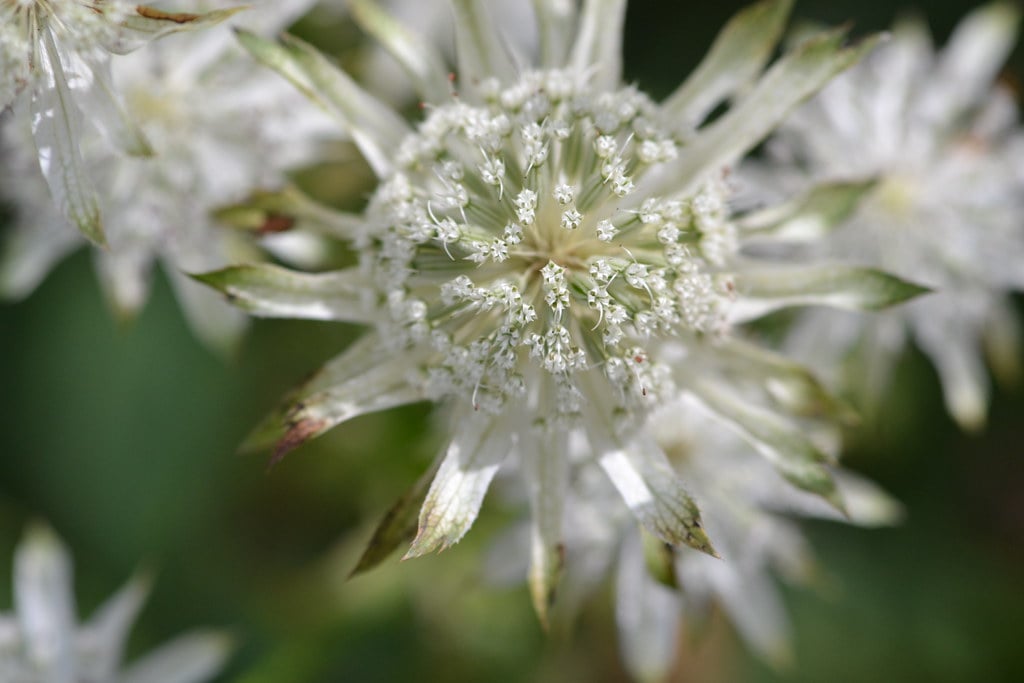
Height- 60cm, size – 30 cm, white flowers over short green stems
8. Astrantia Buckland
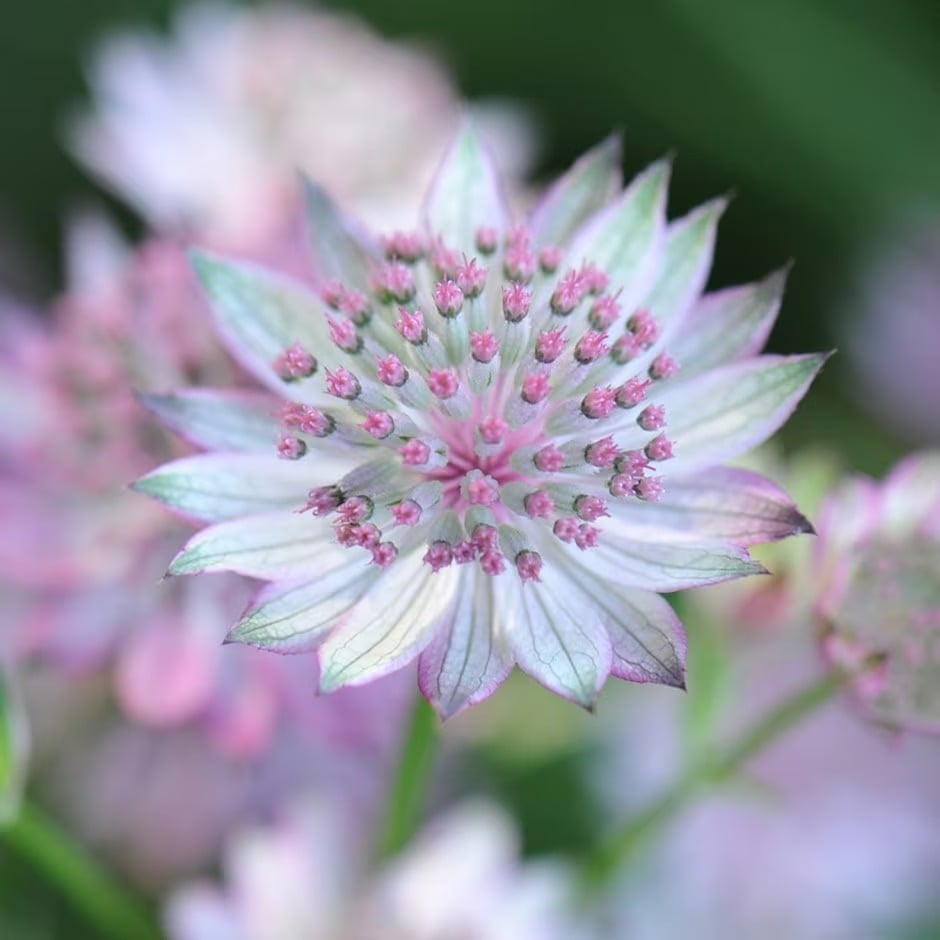
Height – 90cm, size- 45cm, green leaves with pink flowers
9. Astrantia Hadspen Blood
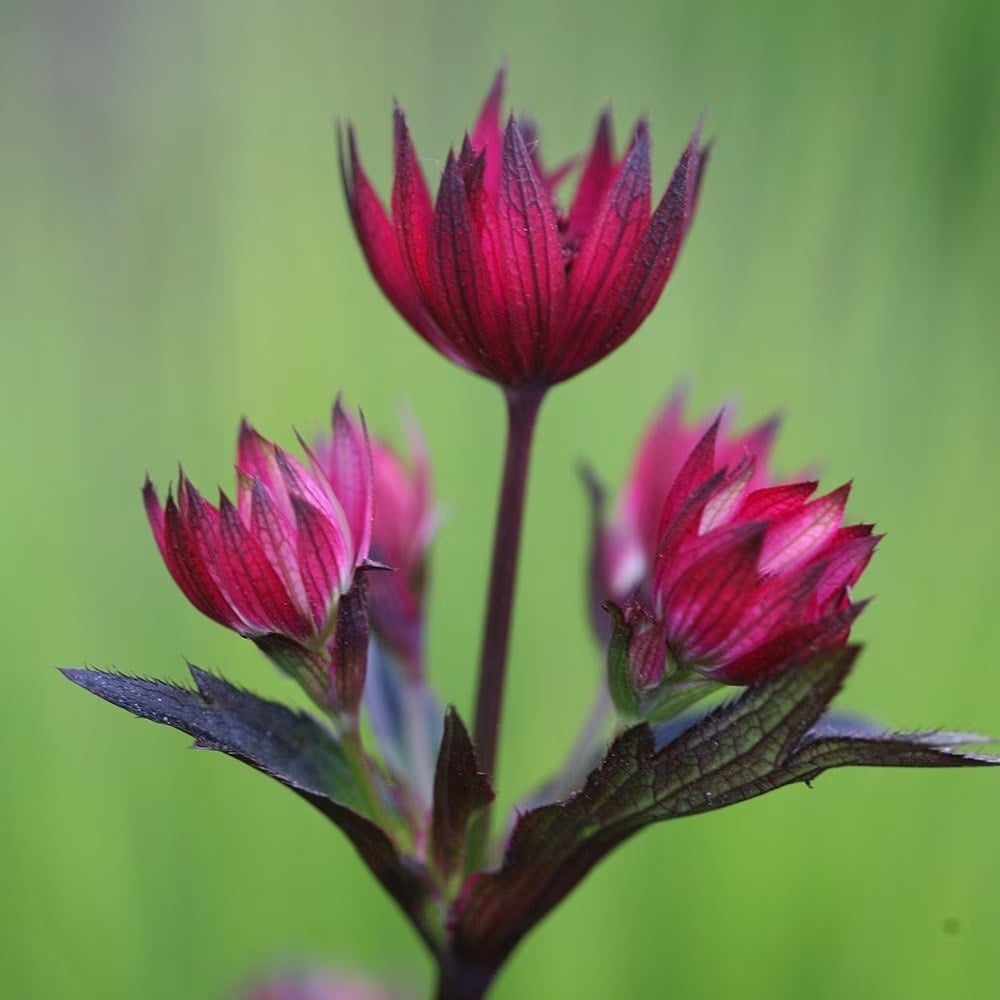
Height – 35cm, size – 35cm, carmine red pincushion flowers
10. Astrantia Gill Richardson
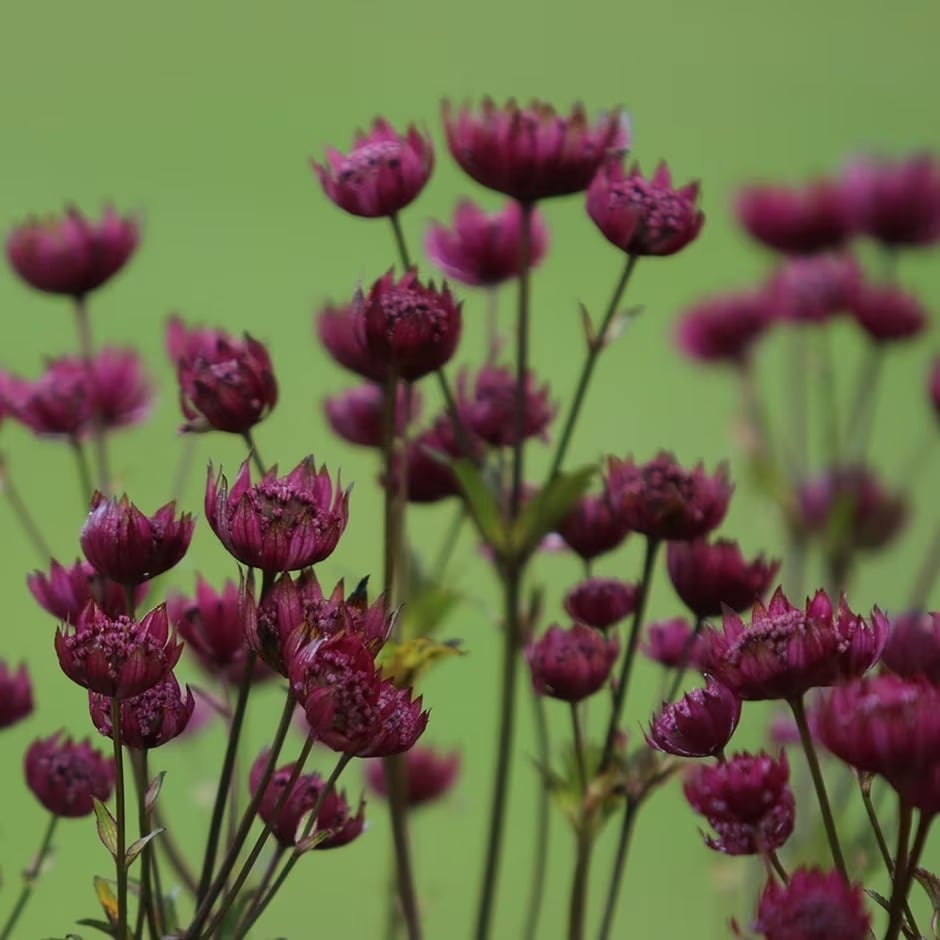
Height – 90cm, size- 25cm, deep cherry red flowers.
Summing Up
All in all, sowing and growing astrantia in the garden is an easy and enjoyable activity for a gardener, whether you are a pro or a beginner. By following the above 6 steps collecting seeds from the flower, preparing the tray for sowing, sowing them into the tray or pot, covering them for germination, letting them germinate, and placing the young Astrantia in the garden for further growth, make sure they have a healthy growth.
First and foremost, it is important to set up the condition for the seeds to germinate, like the sunlight, watering frequently, choosing the astrantia seeds and checking the seed quality, and fertilizing. After germination, cut them from the pot or tray and plant them into the garden and ensure their growth and development are continued.
By being a little patient and caring, you can enjoy the beauty of the astrantia in your garden for the years to come, and do not forget to check on their growth frequently.

